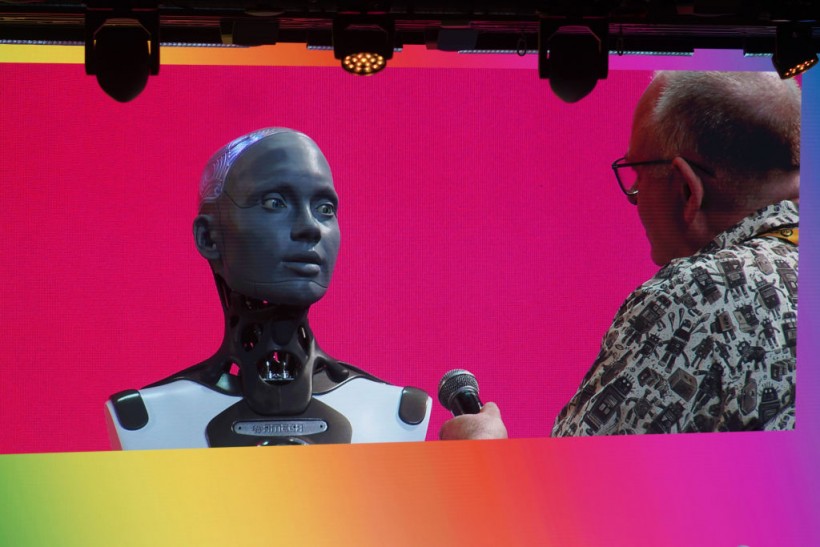Robotics sales in North America have experienced a consecutive second-quarter decline, primarily attributed to a sluggish US economy and rising interest rates, according to the Association for Advancing Automation (A3). The slowdown follows a period of record-breaking purchases in 2021 and 2022.

GENEVA, SWITZERLAND - JULY 06: Will Jackson, CEO and founder of British manufacturer Engineered Arts chats with human shaped robot Ameca on stage on July 06, 2023 in Geneva, Switzerland.
37% Decrease in Robot Orders
A3's latest report reveals that between April and July 2023, companies placed orders for 7,697 robots valued at $457 million, marking a significant 37% decrease in robot orders and a 20% reduction in value compared to the same period in 2022.
When the first-quarter results are factored in, the North American robotics market shows a 29% decrease compared to the first half of the previous year, with 16,865 robots ordered.
This decline comes on the heels of a remarkable 2022 when North American companies ordered 44,196 robots, reflecting an 11% increase over the previous record set in 2021.
Alex Shikany, Vice President of Membership and Business Intelligence at A3, commented: "Over the last five years, we've seen a steady acceleration of robot orders as all industries have struggled with a labor shortage and more non-automotive companies recognize the tremendous value automation provides."
He added, "After this post-COVID surge, however, we're seeing a drawback in purchases, exacerbated by the slow economy and high-interest rates. While many companies continue to automate, others just don't have the capital to invest right now, despite their struggle to find workers willing to do many of the dull, dirty, and dangerous jobs that remain unfilled."
Labor Shortage Drives Automation
According to the US Bureau of Labor Statistics, the report also highlights the ongoing labor shortage, particularly in manufacturing, which saw an additional loss of 2,000 jobs in July.
This continues to be a driving force behind increased automation. Additionally, a rising trend in reshoring tasks in North America has contributed to the interest in automation solutions.
Jeff Burnstein, who serves as the President of A3, pointed out that even though trade shows like Automate in Detroit have seen record attendance, a disparity exists between the level of interest and actual implementation.
He emphasized that once the economy experiences an upturn, those companies that have acquired knowledge about the latest automation innovations and their potential to enhance productivity, address labor shortages, and expedite market entry will be well-prepared.
Interestingly, the report highlights that in the second quarter of 2023, non-automotive customers outpaced automotive customers in robot orders. Specifically, 52% of units went to non-automotive industries, while 48% were allocated to automotive OEMs and component suppliers.
Both categories experienced declines compared to the same period last year, with non-automotive orders dropping by 21% and automotive orders by 49%.
Notable demand in Q2 was observed in the semiconductor and electronics industries, followed by life sciences/pharma and biomedical, plastics and rubber, and metals. In contrast, automotive components, food, consumer goods, and automotive OEMs reported the most substantial declines.
Related Article: Engineers Create One of the Fastest, Most Efficient Amphibious Robots Inspired by Flippers and Centipedes










